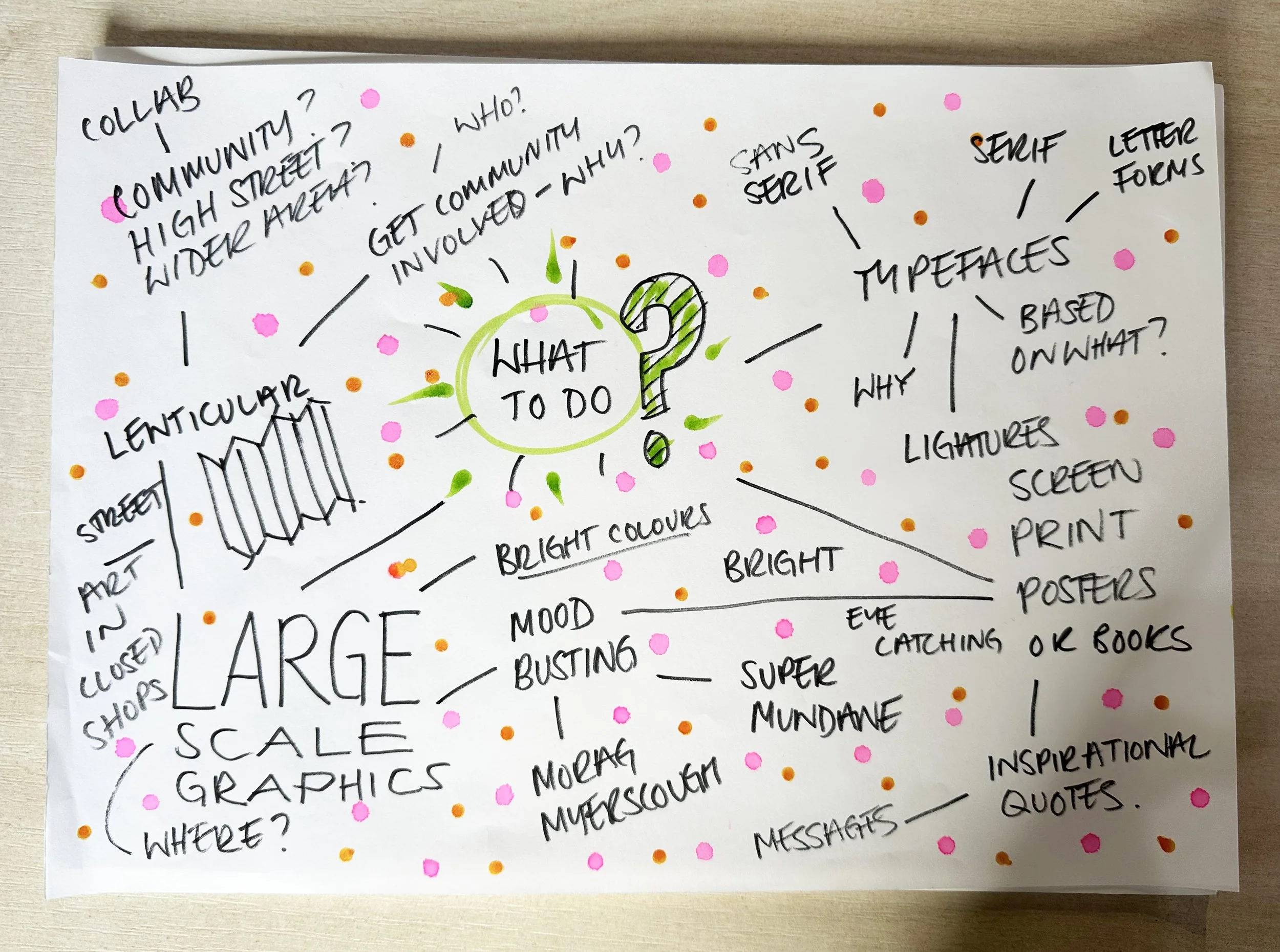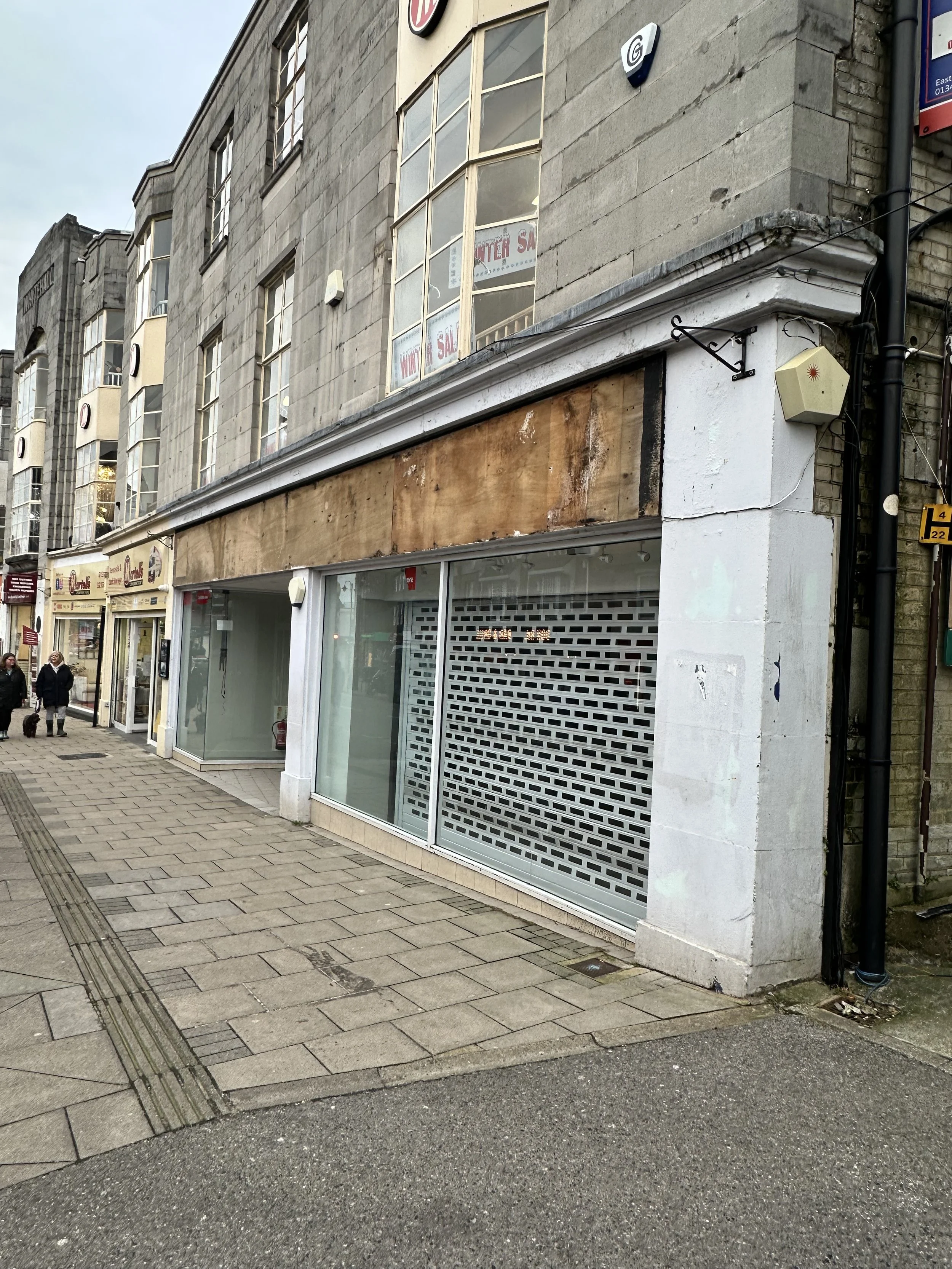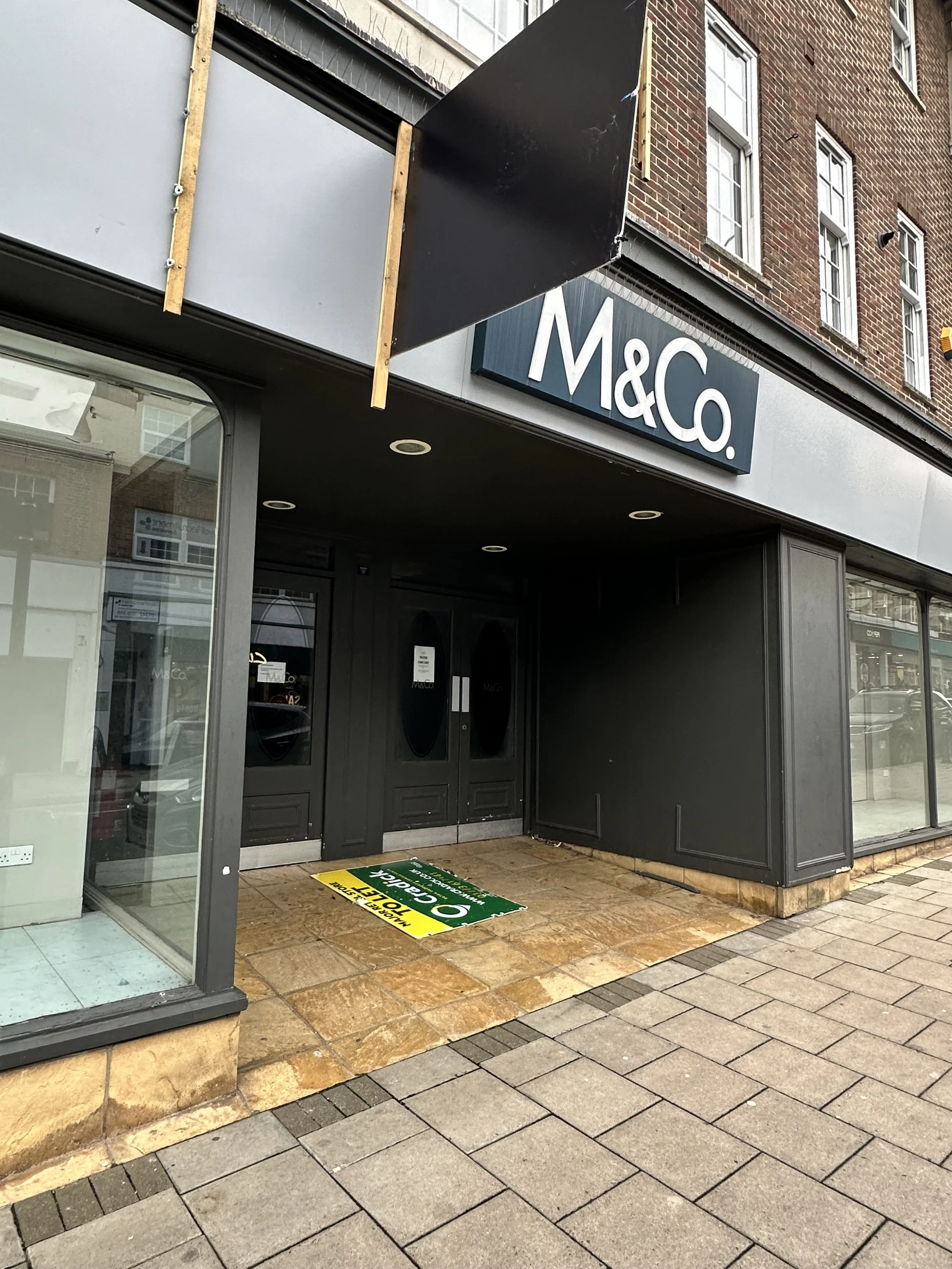Phase 01 - Week 02
Research Journal
This is a record of my project development, showing my weekly tasks, research, design development processes, critical reflection and regular peer reviews.
LO2: Contextualise — Appraise the social, political and historical contexts in which design practice operates.
LO8: Design — Realise a final solution that evidences its strategic journey and clear relationship between form and function.
LO9: Communicate — Communicate effectively in a range of contexts and situations to specialist and non-specialist audiences.
Weeks 01 - 02
Last week:
I revisited all the previous topics
Got out and about to visit the Gilbert and George exhibition in East London
This week:
From last week’s list of previous topics, work out what I enjoyed with the possibility of my FMP
Phase 01/Wk 02: Research + Discover
Research, research again and yet more reading…
I’ve identified the creative work that I have enjoyed from past modules, but I need to find it to gather some more inspiration. It's time to get thinking and sketching some concepts on paper. At this stage, I found it important to get ideas on paper, even to rule them out.
Concept A - Inject some life into the High Street
Through the previous modules, I have rediscovered my love of my hometown. As much as a lot of the visual aspects frustrate me, and there is quite a small-town mentality, it feels relatively safe, there is a good community spirit with incredibly helpful people who genuinely care about their neighbourhoods. However, it is visibly emptying out after some larger businesses decided they no longer need a High Street presence. Two large companies have closed, Barclays and HSBC, and one of the largest multi-story buildings has been left with no prospect of being re-let after clothing company M&Co decided to relaunch online only. With hikes in Business rates and the UK feeling the pinch from increased prices, the smaller shops have also suffered, leaving a trail of visible gaps and closed shutters along what was once a vibrant market town. I feel there could be an opportunity here to get involved.
Initial thoughts and ideas:
Could the empty shops be combined with community areas that have suffered and need a central location, such as:
Foodbanks - And support food boxes for those who are not within the local vicinity
Repair Cafés - To encourage the repair and renewal of sustainable initiatives
Youth Clubs - Workshops and talks to inspire the next generation and keep them off the streets
Police/Police Community Support Officers (PCSOs) workshops for a presence for reassurance and support within the community
Mural through community art - to encourage the youth of the town to collaborate instead of anti-social behaviour
Initial concepts - Large Scale graphics
I really loved the lenticular concept I created on GDE710, so I decided to investigate whether this would be an opportunity to create something large-scale. Morag Myerscroft, Baker & Borowski (Module GDE730) and Super Mundane are great inspirations for mood-busting graphics, which I LOVE . I decided to do further research to see if I could inject some visual aspects into the closed shop windows on my High Street.
In previous modules, I have discussed the supersized art from Morag Myerscroft, Baker, and Borowski, but I love these vibrant, large-scale graphics that bring absolute joy when you see them. I wondered if I could alter perceptions of the culture of my town from its 15th-century ‘old England’ timber framed buildings by injecting some bold, neon contrasting colours into the tired grey High Street?
SuperMundane - Brand Identity for Champions League
Supermundane, (aka Rob Lowe) is a renowned graphic designer known for his vibrant and geometric line work, who was recently commissioned to create the hero artwork for the Champions League in London 2024.
Known for his distinctive use of bold colours and outlined geometric patterns, Supermundane has brought his unique graphic style, infusing his artwork with his energy and dynamism. It perfectly captures the spirit of the Champions League and all the iconic London Landmarks. I particularly love how it is featured all around Greater London at the moment, from Wembley to Regents Street, which has been adorned with its distinctive branding flags.
Concept - Large scale graphics
Inspired by Supermundane's approach, I wondered if I could re-energise my hometown's declining High Street by creating murals on the windows of empty shops. These murals could transform vacant spaces into lively visual designs by utilising bright colours and engaging geometric designs. This initiative would beautify the area and draw attention to potential business opportunities, but it could also create a sense of community and revitalise local commerce. Maybe I could collaborate with local artists or organise community painting events to enhance this project further, making it a collective effort to breathe some new life and energy into the High Street.
However, when discussing my initial concepts with a colleague, we flagged several reasons why we thought this would be difficult to implement. I put together a list of Pros and Cons.
Pros
Great use of space: It could make High St more attractive to residents and visitors. This could boost local businesses and increase foot traffic.
Community Engagement: Establishing community areas in these spaces can create a sense of belonging and provide a central hub for social interaction, cultural activities, and support services. There are no current hot desk spaces - could this help those ‘working from home’ to interact more?
Economic Benefits: Could we get the local or district council involved in any funding. A revitalised High Street could attract new businesses and investors, creating more opportunities and contributing to the local economy.
Utilisation of vacant properties: Repurposing empty shops prevents the urban decay and makes efficient use of available space, enhancing the overall aesthetic of the area.
Cons
Cost and Funding: Booooo! How do we go about renovating and maintaining these spaces, as they can be expensive. Securing funding and ensuring sustainable financial support could be challenging and who owns the buildings - basically all the legal stuff!
Logistical challenges: Coordinating between volunteers and stakeholders, including property owners, local businesses, and community groups, can be complex and time-consuming. Is it a good idea to take on such a large project? Would it be achievable in the time scale - 28 (-4) weeks?!
Security and Maintenance: Ensuring the safety of the properties and cleanliness of these community areas requires ongoing attention and resources, which again could be a continuous burden.
By balancing the pros and cons I can discover what is crucial for a successful initiative. Thorough planning, community involvement, and securing reliable funding are essential to maximize the benefits while mitigating potential downsides. I think this might be a project too far!
Conclusion
Community projects, yes, but not within the empty shops on the High Street. I think this would be incredibly hard to turn around within my timescale and there are too many legal pitfalls - that scare me. I haven’t ruled out large-scale graphics, and I may revisit this, just not in a High Street location.
Practice | Lecture 3 – Academic Creative Practice - Ben James
Another great Ben James' lecture which offers insights into the concept of a research-driven practice, using examples of students work in sound and photography. Having recently completed his own PhD, he offered invaluable advice and stressed the importance of jotting down thoughts immediately after completing a project, even though it can be quite challenging when you're exhausted.
After completing significant projects, his PhD supervisor always nudges him to document his thoughts quickly, a practice he initially resists but finds invaluable. He uses a set of questions known as Brown's Questions to guide his reflections. Brown's Questions are reflective questions designed to help researchers and practitioners analyse and evaluate their work after completing a project. These questions encourage thorough self-assessment and aim to identify the key aspects and implications of the work, as well as areas that may need further exploration.
Working on these principles, I worked out my answers for the last module - GDE720. From this, I was able to establish which areas I enjoyed and those that I was frustrated by (quite a bit) from my project on the Repair Cafe.
Robert Browns eight questions
What did I do?
Why did I do it?
What happened?
What do the results mean in theory?
What do the results mean in practice?
What is the key benefit for the people reading about this project?
What remains unresolved?
He also underscored the importance of the last question, "What remains unresolved?" This reflective approach helps consolidate what has been achieved and sparks new questions and themes for future exploration. His insights underscored the importance of engaging in reflective practice to drive creative and academic work forward.
I think it's incredibly important to remember to be clean and methodical and, as Ben says, “Keep returning to the key themes” so you can keep the audience’s attention.
Think as an advertising expression that people say: ‘tell ‘em, tell ‘em again and tell ‘em a third time’, that’s essentially what we’re doing here.
Ben also stresses the emphasis on the meticulous nature of academic writing. He stressed the necessity of a formal tone, precision, and impeccable grammar. Throughout his own PhD journey, he has learned the importance of these elements. He also emphasises that maintaining high standards in spelling and grammar is crucial for the academic essay and how important it is to read papers and get a sense of the feel of how people talk within our discipline.
Conclusion
After a gap of 30+ years since I last visited Academic Writing, I must admit I found the 3000-word essay in the last module incredibly tough. With the additional word count to 5000 words, organisation is key to giving myself the additional time to complete it to a comfortable level. The ASK team at Falmouth was absolutely fantastic at feedback and guidance, but they get incredibly booked up in the busier months.
Reference list
Websites
Baker and Borowski - Graphic Rewilding [online] Available at: https://www.baker-borowski.com/ [Accessed 6 June 2024 ]
Morag Myerscroft - Urban Environments [online] Available at: https://www.moragmyerscough.com/about [Accessed 6 June 2024 ]
Supermundane - Champions League [online] Available at: https://www.supermundane.com/ [Accessed 5 June 2024 ]
Books
Michael, B. (2021). How to use graphic design to sell things, explain things, make things look better, make people laugh, make people cry, and (every once in a while) change the world. Thames & Hudson. Own Edition [Accessed 3 June 2024 ]









